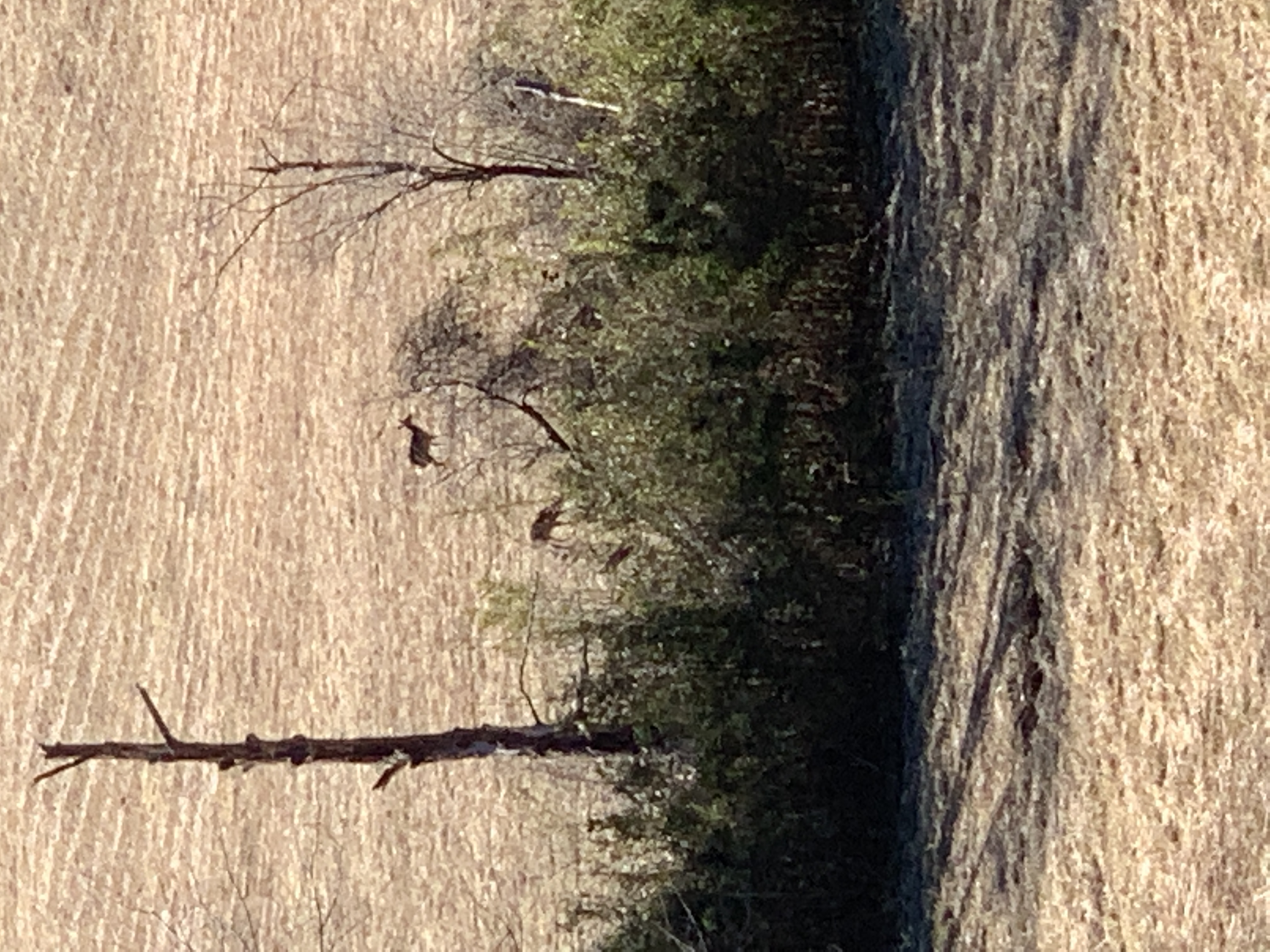How Rivercane Benefits the Environment
go.ncsu.edu/readext?911739
en Español / em Português
El inglés es el idioma de control de esta página. En la medida en que haya algún conflicto entre la traducción al inglés y la traducción, el inglés prevalece.
Al hacer clic en el enlace de traducción se activa un servicio de traducción gratuito para convertir la página al español. Al igual que con cualquier traducción por Internet, la conversión no es sensible al contexto y puede que no traduzca el texto en su significado original. NC State Extension no garantiza la exactitud del texto traducido. Por favor, tenga en cuenta que algunas aplicaciones y/o servicios pueden no funcionar como se espera cuando se traducen.
Português
Inglês é o idioma de controle desta página. Na medida que haja algum conflito entre o texto original em Inglês e a tradução, o Inglês prevalece.
Ao clicar no link de tradução, um serviço gratuito de tradução será ativado para converter a página para o Português. Como em qualquer tradução pela internet, a conversão não é sensivel ao contexto e pode não ocorrer a tradução para o significado orginal. O serviço de Extensão da Carolina do Norte (NC State Extension) não garante a exatidão do texto traduzido. Por favor, observe que algumas funções ou serviços podem não funcionar como esperado após a tradução.
English
English is the controlling language of this page. To the extent there is any conflict between the English text and the translation, English controls.
Clicking on the translation link activates a free translation service to convert the page to Spanish. As with any Internet translation, the conversion is not context-sensitive and may not translate the text to its original meaning. NC State Extension does not guarantee the accuracy of the translated text. Please note that some applications and/or services may not function as expected when translated.
Collapse ▲The environmental benefits of rivercane can not be overstated: it keeps streambanks in place during floods, filters excess nutrients from water flowing through it, and is habitat for animals both above and below ground. High density stands of rivercane, called canebrakes, are becoming more scarce due to development and agriculture, which have reduced the amount of rivercane on the landscape by 98% compared to pre-European contact levels. Rivercane does still form canebrakes and the benefits to the environment are multiplied in these increasingly rare places where rivercane is the only plant growing. Light levels are so low in a canebrake, seeds can not typically germinate in the leaf litter below.
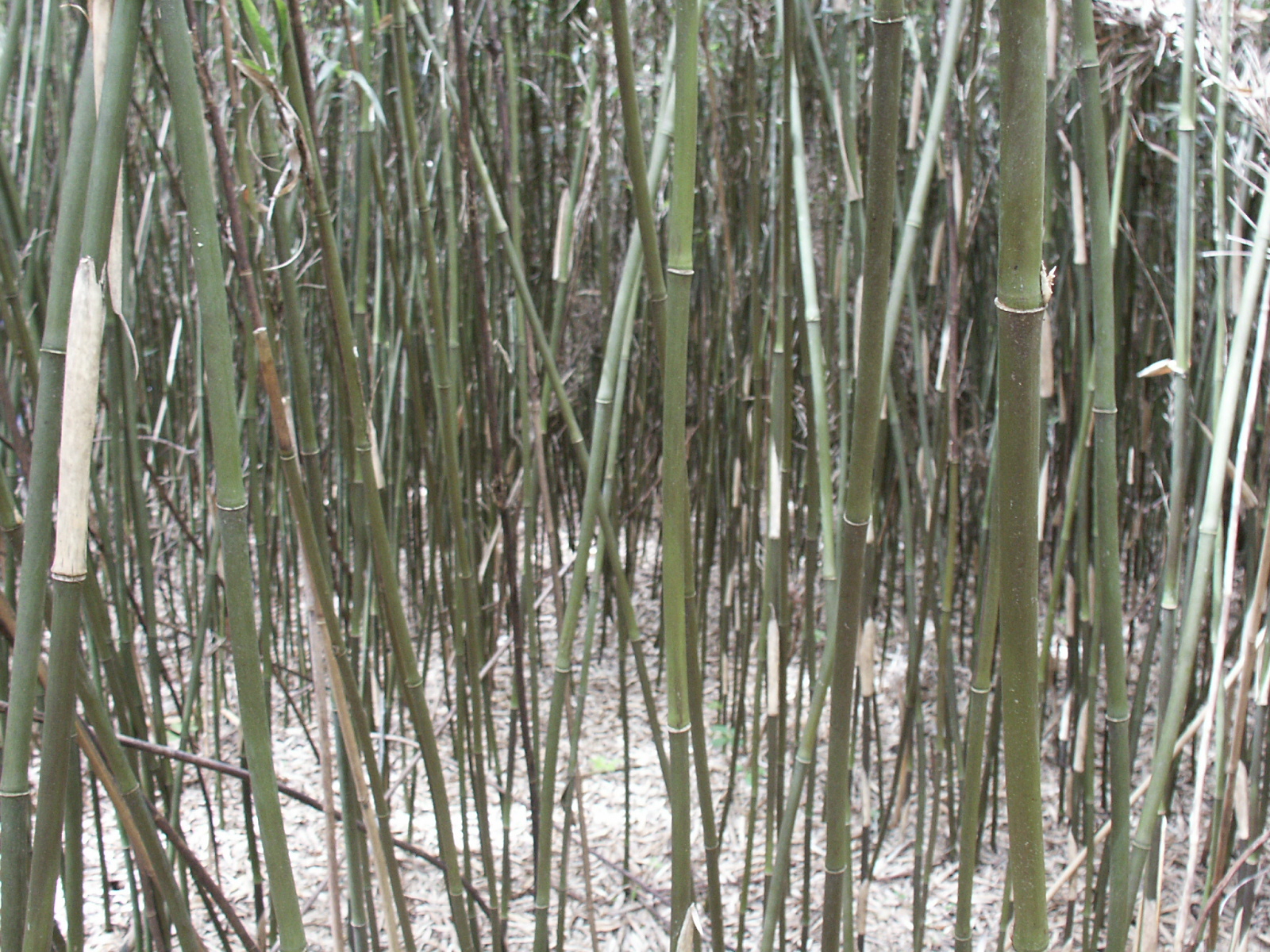
The view from inside a canebrake makes it easier to understand how the species excels at slowing floodwaters, stabilizing streambanks, removing excess nutrients, and serving as excellent wildlife habitat.
Erosion Control
The dense network of underground stems (rhizomes) and roots serve as an excellent binder for soils during flood events. Anecdotal evidence from the active 2004 hurricane season in North Carolina (Ivan, Frances, Jeanne) and more recent observations after Hurricane Helene in September 2024 indicate riparian corridors with rivercane experienced dramatically reduced erosion and bed scour from prolonged and historic flooding. This can be attributed to the dense network of rhizomes and roots anchoring the plant to the ground. Where there are more roots, there are more steams and stem densities in NC canebrakes range from 5 to 20 stems per square meter and are consistent with published numbers from Arkansas, Illinois, and Louisiana.
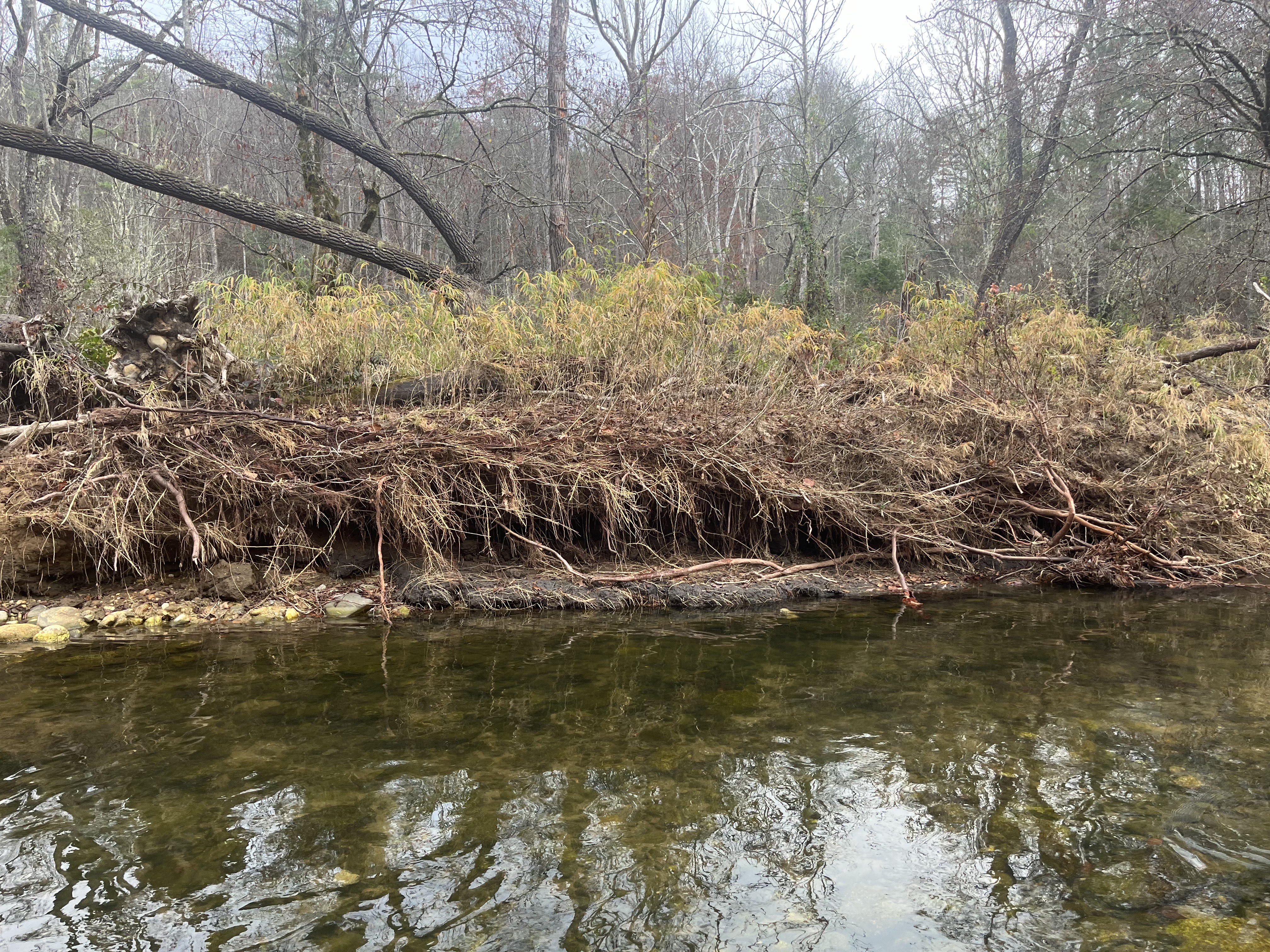
This patch of rivercane growing along the Davidson River stabilized the streambank during historic flooding from Hurricane Helene in September 2024.
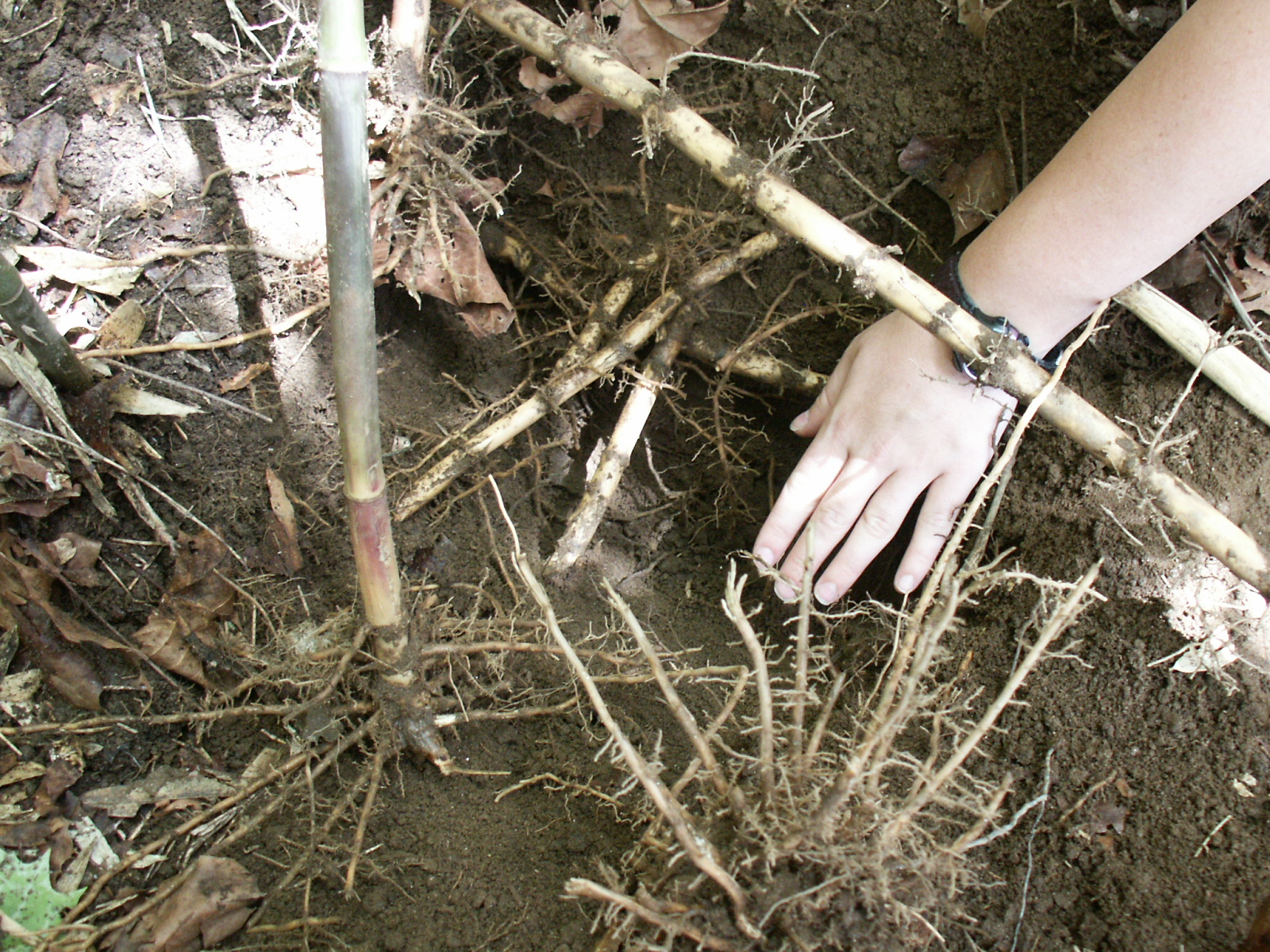
The dense network of rivercane rhizomes crisscross the soils helping keep the plant and the streambank in place when floodwaters rise.
Removal of Excess Nutrients
Rivercane is a highly effective riparian buffer, improving water quality by trapping sediment, nutrients, groundwater nitrates, and groundwater phosphates. Using data from 19 overland flow events, researchers in Illinois found a 21 ft (6.6m) riparian buffer of rivercane reduced sediment by 100% compared to a 76% reduction by a forest buffer of the same width. Giving livestock direct access to streams is a major source of excess levels of some nutrients in waterways and excluding animals with a riparian buffer of rivercane is a highly effective solution. The same team in Illinois also found grass buffers (including rivercane) are more efficient at removing sediment from overland flow events than much wider forest buffers.
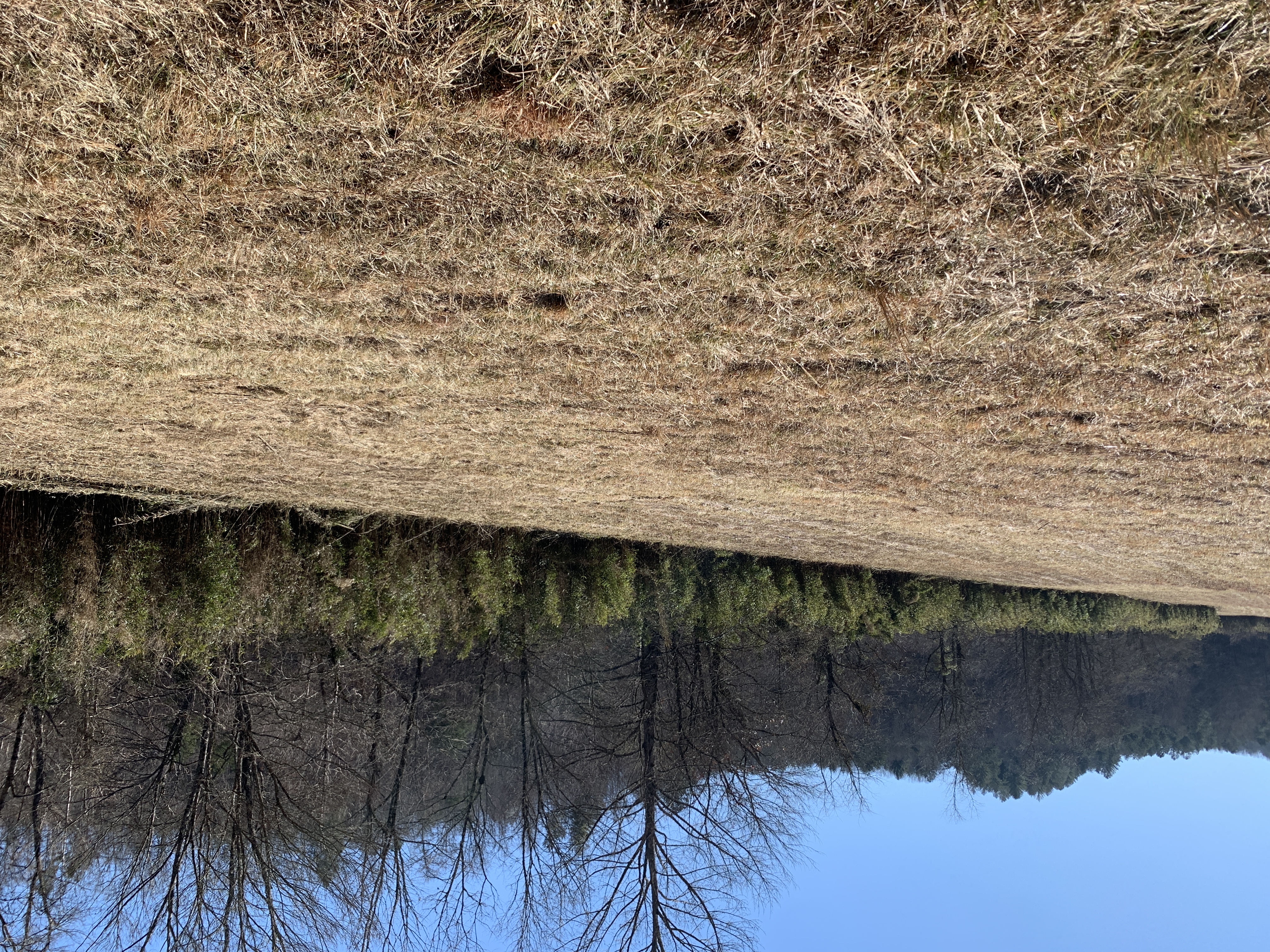
This riparian buffer of rivercane is highly effective at filtering out excess nutrients and sediment.
Canebrakes as Habitat
Mature canebrakes provide food and shelter for so many species due to habitat heterogeneity. The canopy provides shelter and food for insects and birds while the soil itself is an unstudied trove of small mammals, annelids, and arthropods. The organisms living in and on the soil – think moles, voles, mice, rats, and shrews – create macropores contributing to exceptionally low soil bulk densities. There are numerous accounts of the interactions between rivercane and animals ranging from species that merely visit canebrakes to species that require stands of Arundinaria for survival called specialists. In an extensive literature reviews, researchers found mention or occurrence of at least 23 species of mammal, 16 birds, 4 reptiles, and 7 invertebrates in canebrakes. The true importance of rivercane on the landscape will never be known, however, due to extinction of some species which may have been rivercane specialists.




